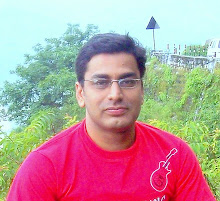Mysore Dussehera
Friday, September 26, 2008
 Four hundred years after the royal festival first began, the occupant of the golden howdah is the 24 carat idol of Goddess Chamundeshwari.
Four hundred years after the royal festival first began, the occupant of the golden howdah is the 24 carat idol of Goddess Chamundeshwari. The chief participants in the festivities are no longer kings and queens, but politicians and government officials.
Today, Mysore's Dussehra has become a people's festival
 The highlight is the procession held on Vijayadashami, the tenth and final day of the festival.
The highlight is the procession held on Vijayadashami, the tenth and final day of the festival. The procession is led by caparisoned elephants carrying an idol of the Goddess Chamundeshwari seated in a golden howdah.
In the days of the Wodeyars, the king used to sit in the howdah.
 Considered to be the mother of all poorams, the Thrissur Pooram is a cultural highlight par excellence, celebrated in the Malayalam month Medam (April/May).
Considered to be the mother of all poorams, the Thrissur Pooram is a cultural highlight par excellence, celebrated in the Malayalam month Medam (April/May).  In Mysore, Dussehra is easily the most popular festival. It is celebrated on a grandiose scale here. Elephants are decked up with robes and jewelery and taken in processions through the streets of the city.
In Mysore, Dussehra is easily the most popular festival. It is celebrated on a grandiose scale here. Elephants are decked up with robes and jewelery and taken in processions through the streets of the city. 









 Bahubali, Jaina Cave, Badami, 6th century. The Jaina saint Gomatesvara, or Bahubali, is believed to have meditated in a standing, still posture for so long that creepers grew about his legs and snakes and other creatures gathered around him. The play of light in the rock-cut cave enhances the experience of the sacred interior
Bahubali, Jaina Cave, Badami, 6th century. The Jaina saint Gomatesvara, or Bahubali, is believed to have meditated in a standing, still posture for so long that creepers grew about his legs and snakes and other creatures gathered around him. The play of light in the rock-cut cave enhances the experience of the sacred interior
 Indra riding the elephant Airavata, his vehicle. Carved on the veranda of the vihara Cave No. 18 at the Bhaja Caves of the 2nd century B.C., this is one of the earliest-known representations of the deity. The style has similarities with the terracottas of the Sunga period. Indra continued to be popular in Buddhist art in subsequent centuries. He is also depicted as the one who, along with Brahma, receives Siddhartha on a cloth when he is born from the side of Queen Mahamaya.
Indra riding the elephant Airavata, his vehicle. Carved on the veranda of the vihara Cave No. 18 at the Bhaja Caves of the 2nd century B.C., this is one of the earliest-known representations of the deity. The style has similarities with the terracottas of the Sunga period. Indra continued to be popular in Buddhist art in subsequent centuries. He is also depicted as the one who, along with Brahma, receives Siddhartha on a cloth when he is born from the side of Queen Mahamaya. The red sandstone cliffs of Badami in Karnataka offered a spectacular setting for the excavation of four caves, three Hindu and one Jaina, in the 6th century A.D. during the rule of the Chalukyas.
The red sandstone cliffs of Badami in Karnataka offered a spectacular setting for the excavation of four caves, three Hindu and one Jaina, in the 6th century A.D. during the rule of the Chalukyas.



.jpg)


















